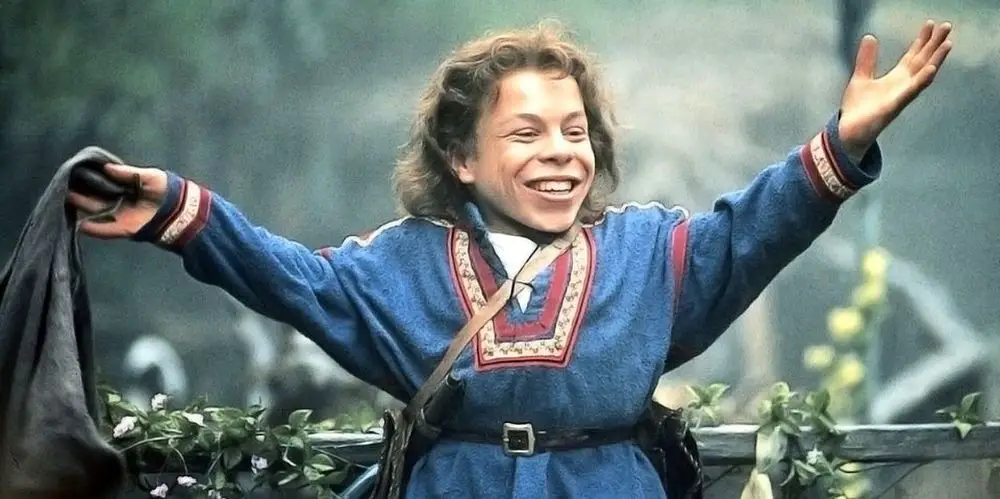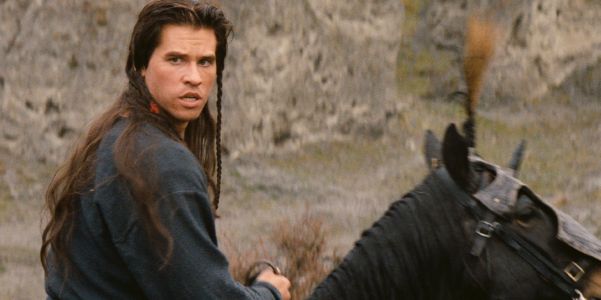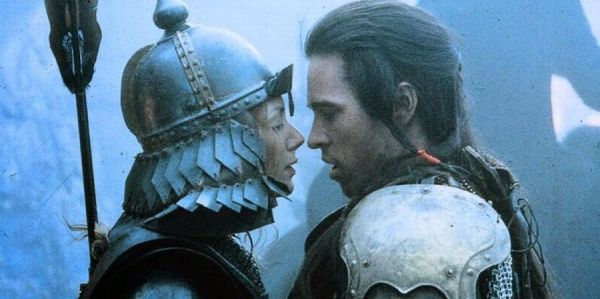WILLOW: A Derivative Fantasy With A Charming Heart

Derek Sanchez is a writer with a B.A. in Film…
Willow has a special place in many film lovers’ hearts. Many of those who love the 1988 fantasy epic saw it as children, and at that young age, the film was possibly the greatest cinematic achievement they had ever seen. There were unlikely heroes, wondrous creatures and imaginative magic filling nearly every frame.
Today, Willow’s overly familiar story and failure to properly develop characters could turn some film fans off, but it has enough charm and creativity to make it worthwhile.
A Hero’s Quest In A Galaxy Far, Far Away
Stop me if you have heard this one before: An unlikely underdog with hopes for a better life embarks on a quest to save a princess. Along the way, the hero meets a scoundrel with a heart of gold who falls in love with a princess. Together, the heroes take on a great evil to bring peace to the world.
That is basically the story of Star Wars. Now compare that to the story of Willow.
Willow (Warwick Davis), a young farmer, is charged with saving infant princess Elora Danon, who is destined to topple the evil Queen Bavmorda (Jean Marsh). Along the way, he joins forces with scoundrel Madmartigan (Val Kilmer), a tough princess Sorsha (Joanne Whalley) and a rag tag group of rebels. Together, they fight to fulfill the young Elora’s destiny.

Executive Producer George Lucas gives us an eerily familiar story that may have come from a galaxy far, far away. The parallels to Star Wars are undeniable, but those films themselves are a retelling of an age-old story. And a well-trodden story can be effective if the story is told well. Willow not only retells this story beautifully, it also adds its own creative touches.
The visuals and special effects are slightly dated compared to more modern fantasy films, but they are still effective in creating a mostly unique fantasy world. There are trolls, fairies and other more typical creatures, but there are also some more innovative creations, like the shape-shifting wizard Fin Raziel (Patricia Hayes) whose transformations from one animal to another are grotesquely compelling to watch. The true highlight is the two-headed dragon creature born from an enchanted troll (Yes, you read that right).
The action scenes rely mostly on practical stunts and effects, bringing a sense of reality to the fantasy setting. There are no C.G.I. armies fighting in vast fields, but there is a breakneck chase in a rickety wagon and a shield-sled escape down a snow topped mountain. All of these scenes are cleanly shot and perfectly edited.
However, not every action set piece works. Willow is one of the first big budget action films that director Ron Howard worked on and it shows, especially in the conclusion. There are awkward angles during the final duels between characters. One duel has no build-up and feels like we have walked into the middle of it, killing its importance.
Glorious Heroes and Lackluster Villains
At the center of the fantasy epic is Willow, ably played by Davis. The actor was only seventeen at the time of filming, and that youthful exuberance plays a large part in what makes the character so likeable. Willow is steadfastly loyal to his young charge and his wide-eyed wonder for all of the wondrous sights make for a charming audience surrogate.

Equal parts Han Solo and Indiana Jones, Madmartigan is the perfect compliment to Davis‘ Willow. Kilmer is having the most fun out of all of the actors and his c*cky persona plays so well off of the more straitlaced Davis. The fact that Madmartigan barely survives most of his adventures in the film makes him even more charming. The friendship that develops between the two is the strongest, and gives the film its heart.
Madmartigan’s romance with Sorsha is clichéd. The daughter of villain Queen Bavmorda, the character is reduced to a simple love interest. While Whalley and Kilmer have chemistry, how and why they get together is unbelievable. Because Sorsha is the daughter of the main villain, the drama should have come easily. She could have been an interesting take on loyalty to family versus what is right.
Sorsha’s lack of development should not be surprising, considering how Willow mishandles its villains. Queen Bavmorda is an empty shell of a character, a suitably evil-looking antagonist with no substance. The film wants to build her up as a mysterious and all-powerful presence, yet she is introduced in the early moments of the film. You cannot have a puppet master behind the scenes if you show her so readily.
But the most damning disappoint is General Kael (Pat Roach). With his black armor and striking skull helmet completely hiding his face, Kael should be Willow’s Darth Vader. Yet he too is an empty shell, though in a worse way than Bavmorda. He is an undeveloped plot device.

Take his introduction. Kael walks into Bavmorda’s castle in a wide long shot. He enters bragging about his latest triumph. He walks up next to Sorsha in a medium shot and stands at her side. His importance is already ruined…he shares power with Sorsha. Now think back to Darth Vader’s introduction. He walks into the aftermath of a battle through a cloud of smoke, his black armor in stark contrast to the surroundings. Vader is dead center in that scene, introducing the viewer to the dark threat to the galaxy.
Like a statue, Kael is simply there. He is bear of a man and roars with the best ogre-like villains, but its very obvious that he is simply there to be Madmartigan’s duel partner. And even that is lackluster.
A Film Out Of Its Time
In 1988, Willow was not a great success at the box office, joining a list of fantasy films that did not quite connect with audiences at the time. Excalibur, Legend, Krull and Ladyhawke come to mind. No matter the quality of those films, audiences were just not in the mood for swords and sorcerers.
In recent years, the success of The Lord of the Rings films show that modern audiences are more open to these films. While Willow is not at the same level of those films, it seems as though it came out at the wrong time. Whatever the case may be, Willow still holds enough charm and heart to please fans of the fantasy genre.
So what do you think? Does Willow stand the test of time despite its flaws?
Does content like this matter to you?
Become a Member and support film journalism. Unlock access to all of Film Inquiry`s great articles. Join a community of like-minded readers who are passionate about cinema - get access to our private members Network, give back to independent filmmakers, and more.
Derek Sanchez is a writer with a B.A. in Film Studies from San Francisco State University. While he enjoys writing his own films, he enjoys analyzing them to the smallest detail just as much. He runs his own film blog with an incredibly awesome name, Supermassive Film Stuff. However, his Twitter name is incredibly unoriginal.













